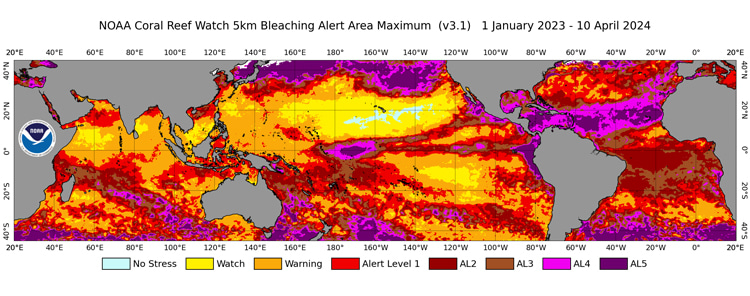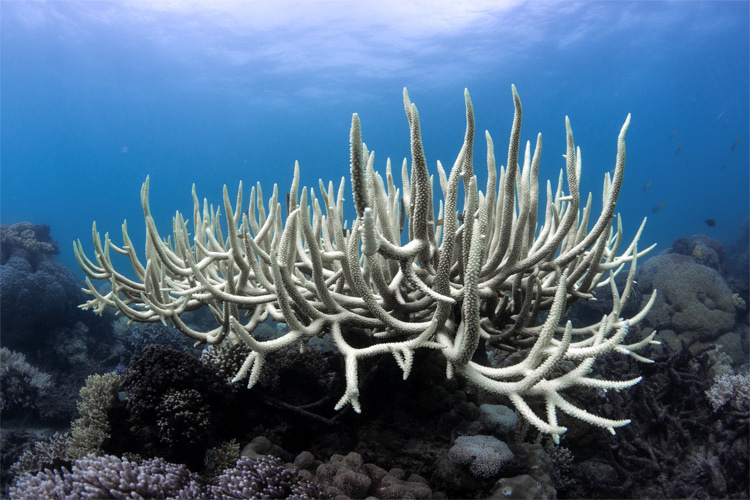A fourth global coral bleaching wave is sweeping the world's oceans.
According to the National Oceanic and Atmospheric Administration (NOAA) and the International Coral Reef Initiative (ICRI), Planet Earth's reefs are undergoing a massive loss of photosynthetic pigment and symbiotic algae.
Scientists from the prestigious organizations confirm that this is the second event of its kind in 10 years.
"From February 2023 to April 2024, significant coral bleaching has been documented in both the Northern and Southern Hemispheres of each major ocean basin," underlined Derek Manzello, Coral Reef Watch (CRW) coordinator at NOAA.
The unprecedented crisis has been documented in both the Northern and Southern Hemispheres, affecting coral reefs in at least 53 countries, territories, and local economies.
In particular, the fourth global coral bleaching phenomenon has affected the following regions:
- Florida (USA);
- Caribbean;
- Brazil;
- Eastern Tropical Pacific (Mexico, El Salvador, Costa Rica, Panama, and Colombia);
- Great Barrier Reef (Australia);
- South Pacific (Fiji, Vanuatu, Tuvalu, Kiribati, the Samoas, and French Polynesia);
- Red Sea (Gulf of Aqaba);
- Persian Gulf;
- Gulf of Aden;
- Indian Ocean (Tanzania, Kenya, Mauritius, the Seychelles, Tromelin, Mayotte, and off the western coast of Indonesia);
Coral bleaching, driven by prolonged increases in ocean temperatures, poses grave threats to reef ecosystems' health and marine biodiversity.
Also, it jeopardizes the livelihoods of coastal communities that depend on coral reefs for fishing, tourism, and coastal protection.
The only way corals can recover is through stress relief, i.e., stabilization of ocean temperatures.
Ultimately, coral restoration is the only option, even though it takes decades to replenish previous losses.

Measurement and Prevention
Florida's 2023 heatwave started earlier and lasted longer. It's an example of the variables that affect coral reef's health.
NOAA has been recommending moving coral nurseries to deeper, cooler waters and deploying sunshades to protect reef structures in other areas.
The worsening frequency and severity of coral bleaching events are attributed to climate change-induced ocean warming.
As global temperatures rise, coral reefs are increasingly vulnerable to heat stress and bleaching.
Urgent action is required to mitigate climate change and reduce the stressors impacting coral reef ecosystems.
Effective conservation and management of coral reefs require coordinated efforts at the global, regional, and local levels.
"Long-term data on coral reef condition can put events like this into context," adds Britta Schaffelke, global coordinator of the Global Coral Reef Monitoring Network (GCRMN), an operation branch of ICRI.
"They allow us to quantify coral mortality, track recovery, and identify areas that don't recover naturally and may need further protection or a helping hand through innovative interventions."
Coral bleaching does not inevitably result in the demise of every coral - corals have the capacity to recover when stress-inducing conditions diminish.
However, research at the Great Barrier Reef indicates that there are consequences for recovery, particularly in terms of a coral's reproductive ability, which plays a pivotal role in the replenishment of coral reefs following disturbances.
